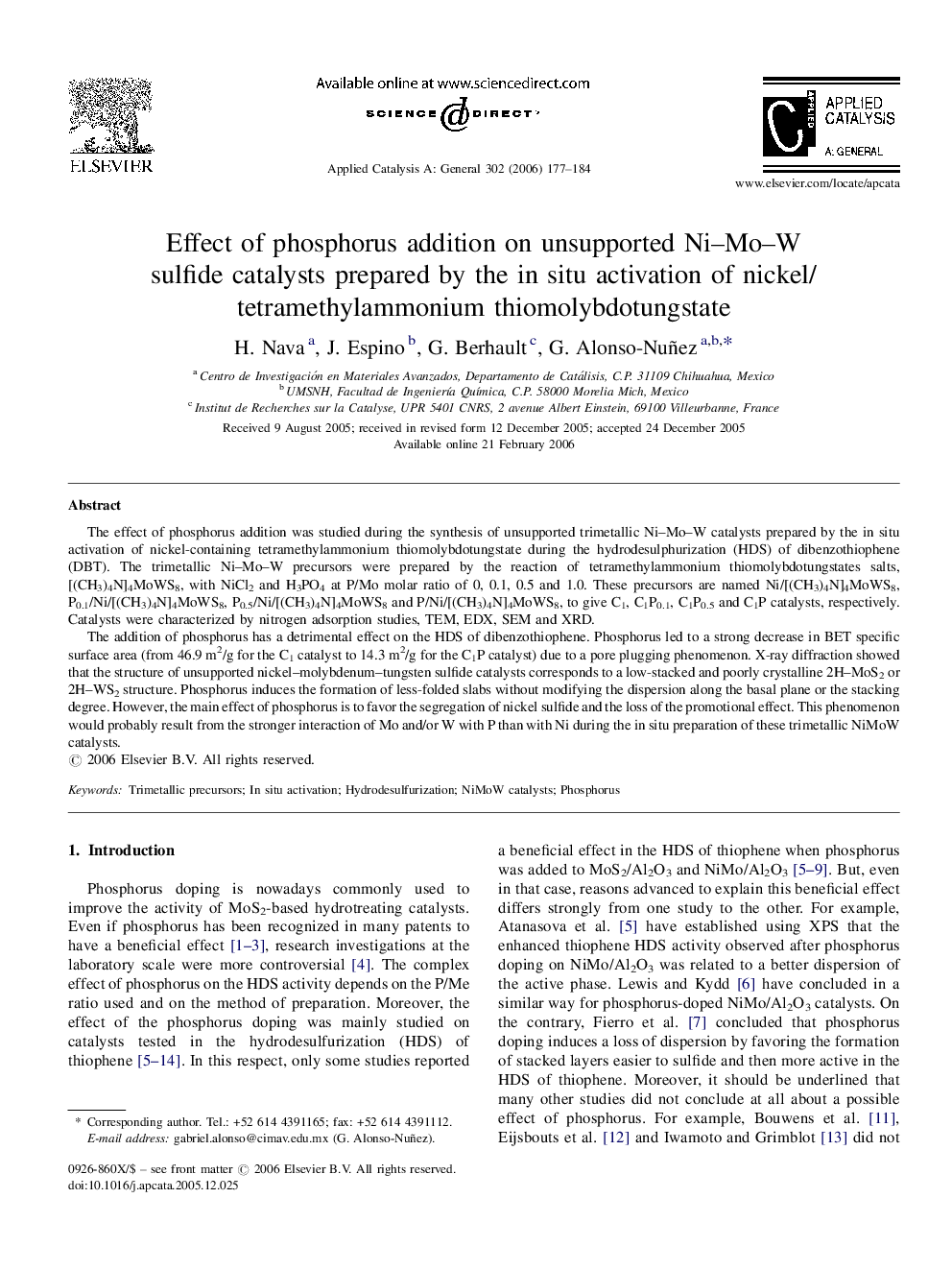| Article ID | Journal | Published Year | Pages | File Type |
|---|---|---|---|---|
| 44547 | Applied Catalysis A: General | 2006 | 8 Pages |
The effect of phosphorus addition was studied during the synthesis of unsupported trimetallic Ni–Mo–W catalysts prepared by the in situ activation of nickel-containing tetramethylammonium thiomolybdotungstate during the hydrodesulphurization (HDS) of dibenzothiophene (DBT). The trimetallic Ni–Mo–W precursors were prepared by the reaction of tetramethylammonium thiomolybdotungstates salts, [(CH3)4N]4MoWS8, with NiCl2 and H3PO4 at P/Mo molar ratio of 0, 0.1, 0.5 and 1.0. These precursors are named Ni/[(CH3)4N]4MoWS8, P0.1/Ni/[(CH3)4N]4MoWS8, P0.5/Ni/[(CH3)4N]4MoWS8 and P/Ni/[(CH3)4N]4MoWS8, to give C1, C1P0.1, C1P0.5 and C1P catalysts, respectively. Catalysts were characterized by nitrogen adsorption studies, TEM, EDX, SEM and XRD.The addition of phosphorus has a detrimental effect on the HDS of dibenzothiophene. Phosphorus led to a strong decrease in BET specific surface area (from 46.9 m2/g for the C1 catalyst to 14.3 m2/g for the C1P catalyst) due to a pore plugging phenomenon. X-ray diffraction showed that the structure of unsupported nickel–molybdenum–tungsten sulfide catalysts corresponds to a low-stacked and poorly crystalline 2H–MoS2 or 2H–WS2 structure. Phosphorus induces the formation of less-folded slabs without modifying the dispersion along the basal plane or the stacking degree. However, the main effect of phosphorus is to favor the segregation of nickel sulfide and the loss of the promotional effect. This phenomenon would probably result from the stronger interaction of Mo and/or W with P than with Ni during the in situ preparation of these trimetallic NiMoW catalysts.
